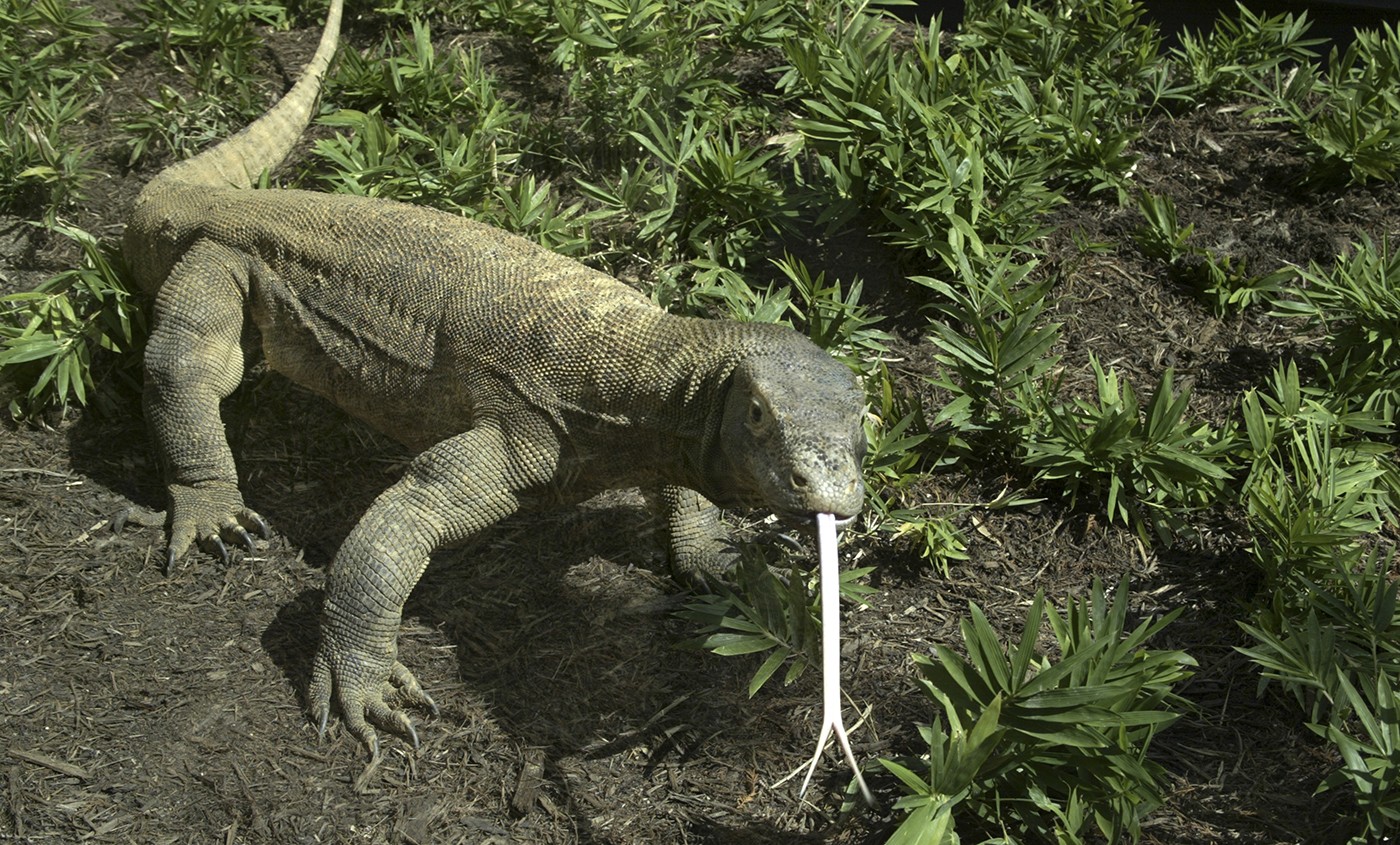KID REPORTERS’ NOTEBOOK
Saving Lives With a Dragon’s Blood?


Researchers think that a substance in the blood of Komodo dragons could help counter resistance to penicillin and other antibiotics.
Antibiotics have been around since 1928, when penicillin was invented. Pencillin and other antibiotics kill harmful bacteria that cause infections. But new types of antibiotics are always necessary. Their repeated use leads to resistance, which happens when germs develop the ability to defeat medications.
Researchers at George Mason University (GMU) have discovered a potential new source for an antibiotic: the blood of Komodo dragons. These huge creatures are actually a species of lizard that can be found on a few Indonesian islands, including the island of Komodo. The meat-eating reptiles are named after dragons because they’re so fierce. They’re one of the few species of lizard with a deadly bite.
To learn more about the possible medical use of the Komodo dragon’s blood, I interviewed Monique Van Hoek and Barney Bishop, the lead GMU researchers. Van Hoek is a professor in the School of Systems Biology at GMU, and Bishop is an associate professor in the Department of Chemistry and Biology.
“We both have been very interested in reptiles, in general,” Bishop said. “These animals are very successful and have been on the planet for millions of years—much longer than we Homo sapiens [humans] have.”
Komodo dragons feed off of mammals, insects, and birds, and are constantly fighting each other for territory. Despite their precarious existence, they have thrived for about 4 million years. By comparison, humans have been around for only 200,000 years. This durability led the GMU researchers to wonder: “What is the key to the dragons’ success?”
The answer is in the Komodo dragons’ blood. “Komodo dragons are such ancient, successful animals,” Van Hoek said. “They have some peptides in their blood that lab animals such as mice might not have.”
Peptides are small strings of amino acids that form proteins. Komodo dragons have a special peptide in their blood that can protect them from dangerous bacteria in rotten food and infections. The GMU research team has named the peptide “DRGN-1.”
“It lets Komodo dragons consume meals that would kill me or you,” Bishop said. Having DRGN-1, as well as tough skin, poisonous bites, and powerful jaws, makes the Komodo dragon one of the fiercest predators alive.

Kai talks with GMU researchers Monique Van Hoek and Barney Bishop via Zoom.
THE PROMISE OF DRGN-1
Van Hoek and Bishop’s research team has worked hard to create a new antibiotic using DRGN-1 as the basis. “We only detect DRGN-1 in Komodo dragons,” Van Hoek said. “We can create more using a chemical synthesizer in our lab.”
The GMU research has led to a substance that can heal infected wounds in mice. Scientists now believe that DRGN-1 may also help humans. Some day, the antibiotic a doctor prescribes could come from the blood of a ferocious lizard.
